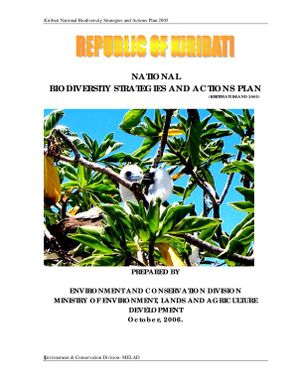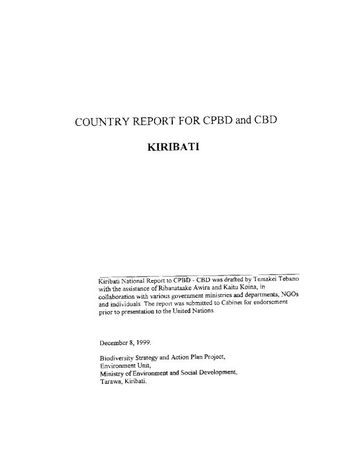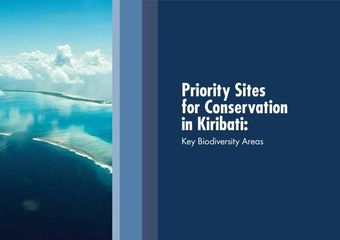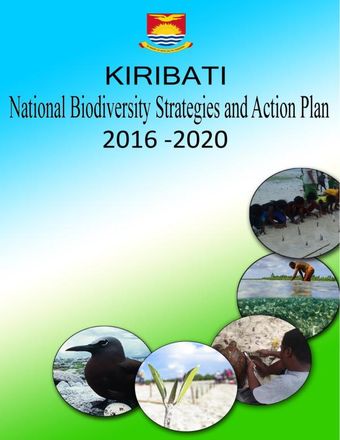Kiribati National Biodiversity Strategies and Action Plan 2005
- Description:
- The Biodiversity in this context means all terrestrial and marine ecosystems, all plants and animal species and varieties found in these ecosystems including the knowledge, uses, beliefs and language that the people of Kiribati have in relation to their ecosystems and species. Biodiversity Conservation is always considered along with sustainable use. It has been confirmed that the present state of biodiversity in the Republic of Kiribati is being degraded socially, economically, politically and even judicially. As a nation with very limited resources we just cannot afford to sit back and let this serious degradation continues. If the biodiversity is not conserved or used on a sustainable basis, and if traditional sustainable management practices, and the knowledge and relevant language are not maintained or strengthened then future development would not be able to sustain the people in the long term. The main key in the whole process is the resource owners and users at the community level who hold the long lasting key to biodiversity conservation.
- Display date:
- 2005
- Collections:
- Secretariat of the Pacific Regional Environment Programme (SPREP)
- Publisher:
- Environment and Conservation Division, Ministry of Environment, Lands and Agriculture
- Content partner:
- Secretariat of the Pacific Regional Environment Programme (SPREP)
- Availability:
- Not specified
-
Copyright status: All rights reservedFind out more about what you are able to do with this itemThis item is all rights reserved, with means you'll have to get permission from Secretariat of the Pacific Regional Environment Programme (SPREP) before using it. For more information, please see our use and reuse page.What can I do with this item?Non-infringing useNZ copyright law does not prevent every use of a copyright work, and this item may be hosted by an international institute or organisation. You should consider what you can and cannot do with a copyright work.No sharingYou may not copy and/or share this item with others without further permission. This includes posting it on your blog, using it in a presentation, or any other public use.No modifyingYou are not allowed to adapt or remix this item into any other works.No commercial useYou may not use this item commercially.
Related items
Welcome and warm Pasifik greetings
The information on this site has been gathered from our content partners.
The names, terms, and labels that we present on the site may contain images or voices of deceased persons and may also reflect the bias, norms, and perspective of the period of time in which they were created. We accept that these may not be appropriate today.
If you have any concerns or questions about an item, please contact us.



